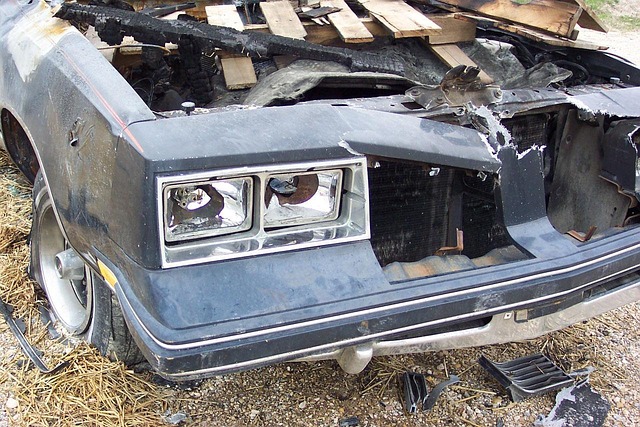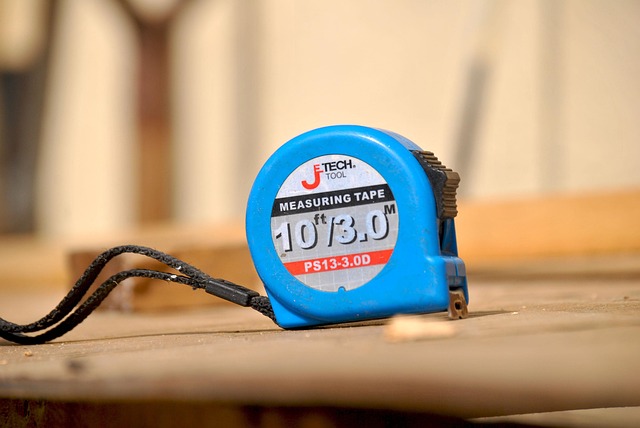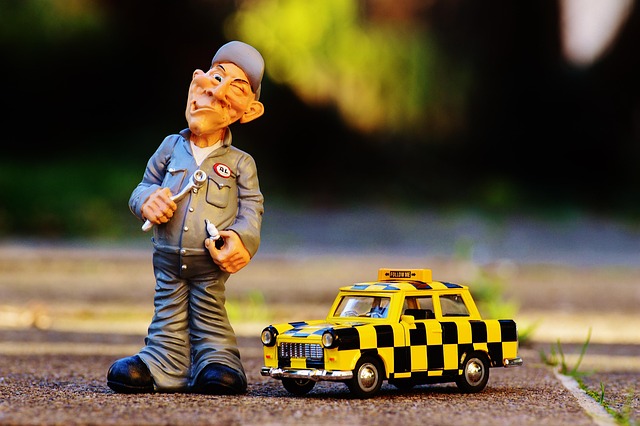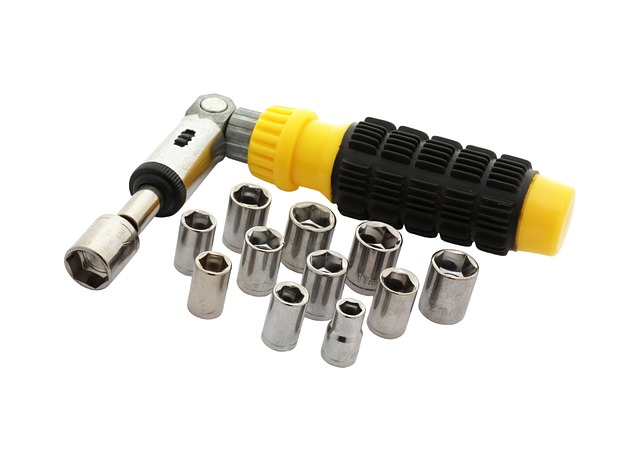Digital Revolution: Streamlining Auto Body Repair Shop Operations
The digital era has dramatically transformed auto body repair shops by integrating advanced technolo…….
Welcome to an extensive exploration of the world of auto body repair shops—essential hubs in the automotive industry that play a pivotal role in restoring vehicles to their pre-accident condition. This article aims to provide an exhaustive guide, delving into various aspects that shape this dynamic sector. From its historical roots to cutting-edge technologies, and from global trends to future prospects, we will navigate through the intricate world of auto body repair, offering valuable insights for professionals, enthusiasts, and anyone curious about this fascinating industry.
Definition: An auto body repair shop, also known as a collision repair center or autobody shop, is a specialized facility dedicated to fixing and restoring damaged motor vehicles. These shops cater to a wide range of needs, from minor bumps and scratches to significant post-accident repairs.
Core Components:
Workshops: Spacious areas equipped with various tools and machinery essential for different types of auto body work. This includes frame racks, welding equipment, sandblasters, and paint booths.
Skilled Workforce: A team of highly trained professionals, including auto body technicians, painters, welders, and estimators, who possess expertise in various repair techniques.
Services Offered:
Historical Context: The concept of auto body repair shops dates back to the early 20th century as automobiles became more prevalent on the roads. With the increase in traffic accidents, there was a growing demand for specialized facilities to fix damaged vehicles. Over time, these shops evolved, adopting new technologies and techniques to keep up with advancing automotive designs and safety standards.
Significance: Auto body repair shops are integral to several aspects:
International Influence: Auto body repair shops are a global phenomenon, with variations in practices and regulations across different countries. The United States, Europe, and Japan have well-established industries, while emerging markets like India and Brazil are rapidly expanding their auto repair sectors.
Regional Differences:
| Region | Notable Features |
|---|---|
| North America | Known for its advanced technology and strict safety standards, particularly in the US. Many shops offer state-of-the-art equipment and same-day repairs. |
| Europe | Focus on precision and environmental sustainability is prominent. The UK and Germany are recognized for their high-quality repair standards. |
| Asia Pacific | Rapid growth due to increasing vehicle ownership and stringent safety regulations in countries like Japan and South Korea. |
| Latin America | Striving for modernization, with a growing demand for affordable, quality repairs. |
Key Global Trends:
Digitalization: The adoption of digital technologies is revolutionizing auto body repair. Online estimating tools, customer relationship management (CRM) software, and vehicle tracking systems are becoming industry standards.
Sustainability: There is a growing emphasis on eco-friendly practices, including the use of recycled materials, water-based paints, and energy-efficient equipment.
Mobile Repairs: Some shops are offering mobile services, providing on-site repairs for minor damages, which enhances convenience for customers.
E-commerce Integration: Online platforms are changing how customers find and book repair services, making it easier to compare prices and book appointments.
Market Dynamics: The global auto body repair market is substantial and growing. According to a 2022 report, the market size was valued at USD 478.5 billion in 2021 and is projected to expand at a CAGR of 6.2% from 2022 to 2030. This growth is driven by increasing vehicle sales, rising road accidents, and growing awareness of auto body repair services.
Investment Patterns: Auto body repair shops attract investors due to their stable revenue streams and relatively low entry barriers compared to other industries. Franchised chains and independently owned shops both have their appeals, with franchisors offering proven business models and support, while independent shops provide flexibility and customization.
Economic Impact:
Transforming the Industry: Technology has been a game-changer in auto body repair shops, improving efficiency, accuracy, and customer experience. Here are some significant advancements:
Computerized Estimating Software: Digital tools enable estimators to quickly and accurately assess damage, generate reports, and compare costs, streamlining the claims process.
Robotic Welding: Automated welding systems offer precision and speed, reducing labor costs and improving consistency in panel alignment.
Paints and Finishes: Advanced water-based paints and specialized coatings provide superior durability, faster drying times, and reduced environmental impact.
Frame Straightening Machines: Modern equipment, such as laser frame straighteners, ensures accurate and efficient correction of vehicle frames, minimizing body panel misalignment.
3D Scanning and Printing: 3D technology allows for precise measurements and even the reproduction of unique parts, offering a new level of customization and repair possibilities.
Future Prospects: The horizon is filled with technological promises:
Governance: Auto body repair shops operate within a framework of laws and regulations that vary by region. These include:
International Compliance: As a global industry, auto body repair shops must navigate cross-border regulations, especially when operating in multiple countries. International standards and agreements ensure consistency in safety and environmental practices.
Common Issues:
| Challenge | Description |
|---|---|
| Competition: Intense competition from both independent shops and larger franchises can make it challenging for smaller businesses to thrive. | Requires strategic pricing, marketing, and customer service to stand out. |
| Technological Obsolescence: Rapid technological advancements may leave some shops behind, requiring significant investments to stay competitive. | Continuous training and updating of equipment are necessary. |
| Labor Shortages: Skilled technicians are in high demand, leading to labor shortages in many regions. | Attracting and retaining talent is a constant challenge. |
| Insurance Bureaucracy: Navigating insurance claims processes can be complex and time-consuming, impacting customer satisfaction. | Efficient management of claims is crucial for maintaining positive relationships with insurers and clients. |
Strategic Solutions:
Case Study 1: GreenAuto Repair (North America)
GreenAuto, a network of eco-conscious repair shops, has gained recognition for its innovative approach. They prioritize sustainable practices, using only recycled materials and water-based paints. By educating customers on environmental issues, they have built a loyal customer base. GreenAuto’s success lies in their unique selling proposition, attracting environmentally conscious consumers.
Case Study 2: TechFix (Europe)
TechFix, a European chain, has revolutionized the industry with its digital-first strategy. They offer online booking and tracking, providing customers with real-time updates on their vehicle repairs. Their investment in AI for damage assessment has significantly reduced estimate times, enhancing customer satisfaction.
Case Study 3: Brazilian Auto Revival (Latin America)
In Brazil, Auto Revival is leading the way in affordable, high-quality repairs. They have tackled the challenge of labor shortages by implementing automated welding and painting systems, reducing labor costs without compromising quality. Their focus on community engagement has also helped them build a strong local customer base.
The auto body repair shop landscape is poised for significant growth and transformation. Here are some potential areas of development:
Auto body repair shops are not just places for fixing damaged cars; they are dynamic hubs that contribute significantly to road safety, environmental protection, and economic growth. From their historical roots to the cutting-edge technologies of today, these shops have evolved to meet changing demands. As we look ahead, the industry stands at a crossroads, embracing digital transformation, sustainability, and specialized services to shape its future.
By understanding the intricacies of auto body repair shops, from global trends to technological advancements, professionals can navigate this ever-changing landscape. Customers, too, can make informed choices, knowing that these shops are integral to keeping them safe on the roads. As technology continues to advance and environmental concerns grow, the role of auto body repair shops will only become more critical in shaping a sustainable future for transportation.
Q: How do I choose the best auto body repair shop?
A: Consider factors like location, reputation, customer reviews, warranties offered, and their ability to handle your specific needs. Ask for references and compare prices, ensuring they provide transparent estimates.
Q: Are there any environmental considerations in auto body repair?
A: Absolutely! Many shops now use eco-friendly materials and practices, such as recycled parts, water-based paints, and energy-efficient equipment, to minimize their environmental impact. Look for shops that prioritize sustainability.
Q: Can I get my car repaired while it’s still under warranty?
A: It depends on the terms of your warranty. Some manufacturers cover certain repairs, but others may require you to use authorized service centers. Check with your dealer or manufacturer to understand your options and rights.
Q: How safe are auto body repair shops for my vehicle?
A: These shops prioritize safety, ensuring that all work complies with industry standards and regulations. Technicians are trained to perform repairs accurately and safely, restoring your vehicle’s structural integrity. Regular inspections and testing ensure the safety of the shop environment.
Q: What is the average cost of auto body repair?
A: Costs vary widely depending on the extent of the damage, location, and parts used. Estimates can range from a few hundred to several thousand dollars. It’s always best to receive multiple estimates for accurate pricing.

The digital era has dramatically transformed auto body repair shops by integrating advanced technolo…….

At an auto body repair shop, a detailed assessment and estimation service is the first step. Skilled…….

A comprehensive assessment by experienced technicians is crucial for auto body repair, especially de…….

Auto body repair shops address rust damage, a common issue in regions with extreme climates and high…….

When choosing an auto body repair shop, understand your rights to high-quality work, transparent com…….

TL;DR: Auto body repair shop timelines are crucial for setting realistic expectations, optimizing op…….

The automotive sector benefits from partnerships between leasing companies and auto body repair shop…….

Auto body repair shops begin with a thorough inspection to assess collision damage across exterior p…….

Frame alignment is a crucial process at auto body repair shops, ensuring vehicle safety and structur…….

Auto body repair shops perform critical damage assessments after severe collisions using advanced to…….